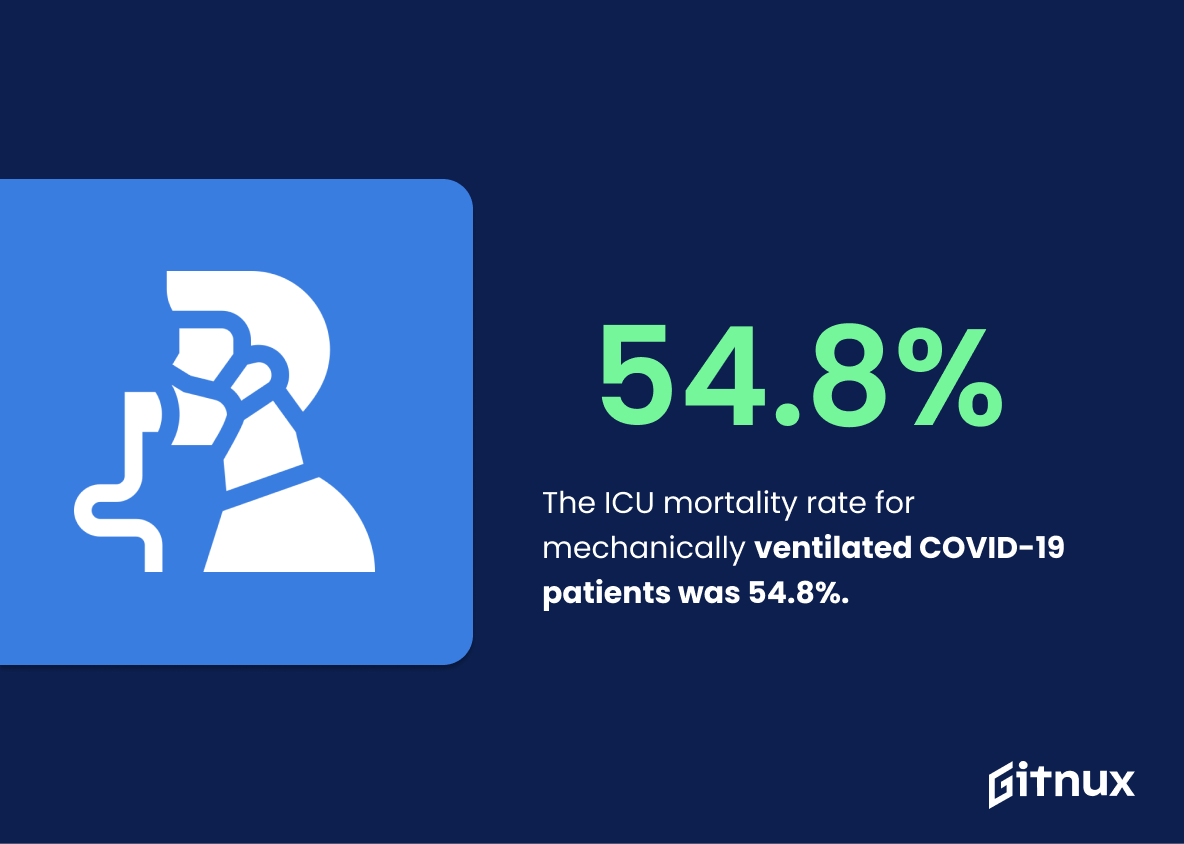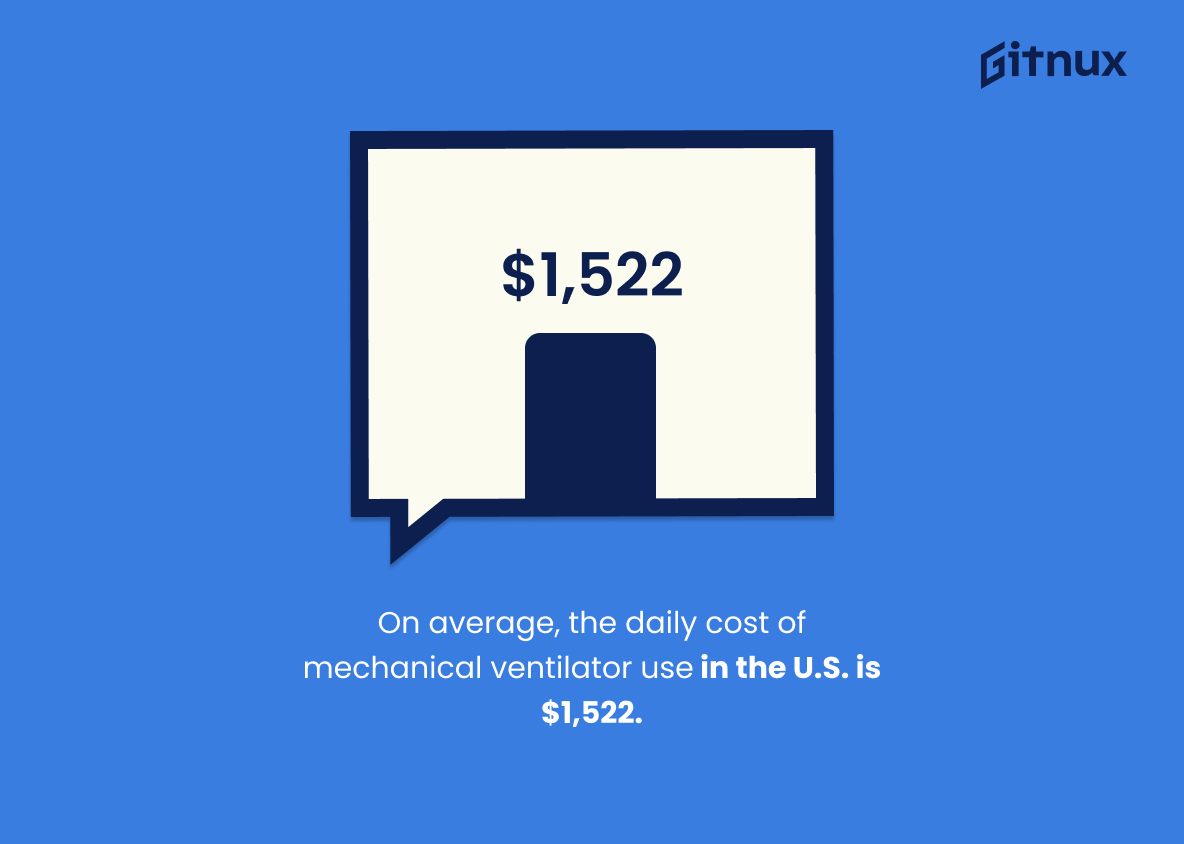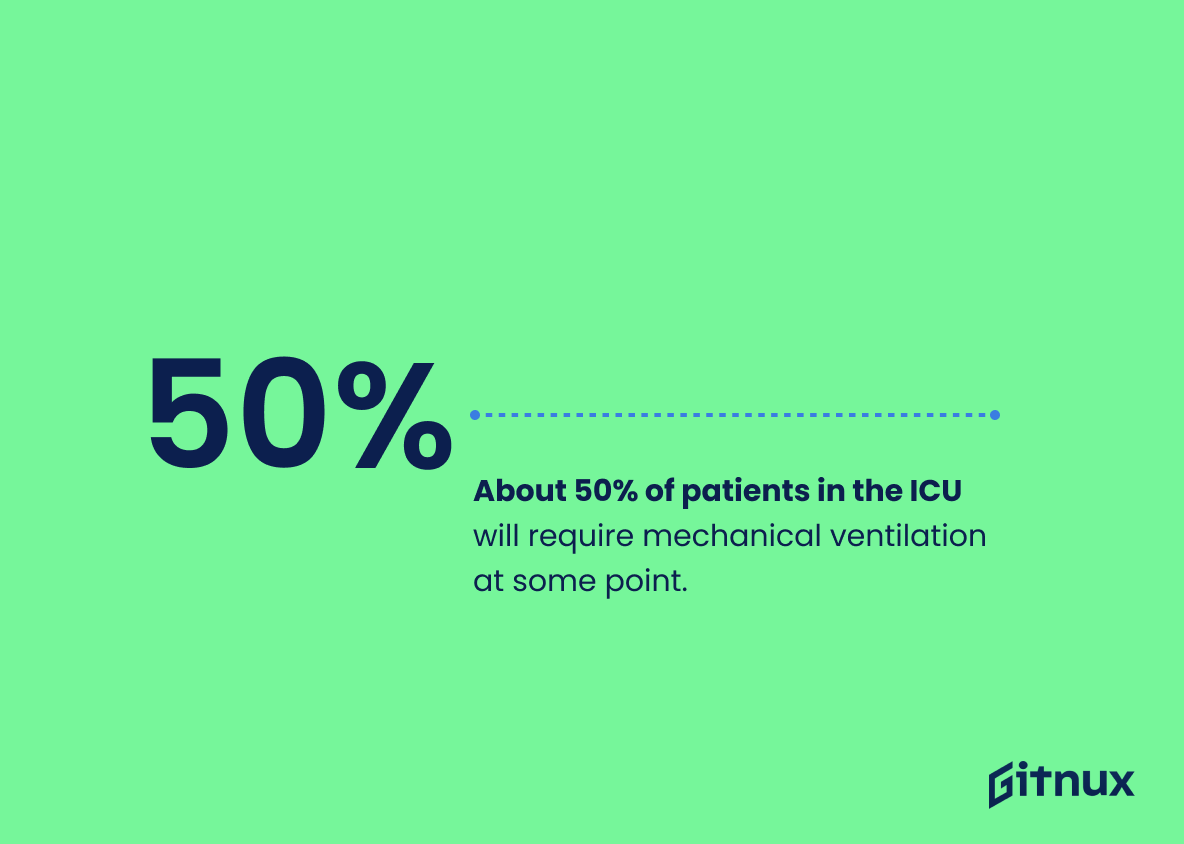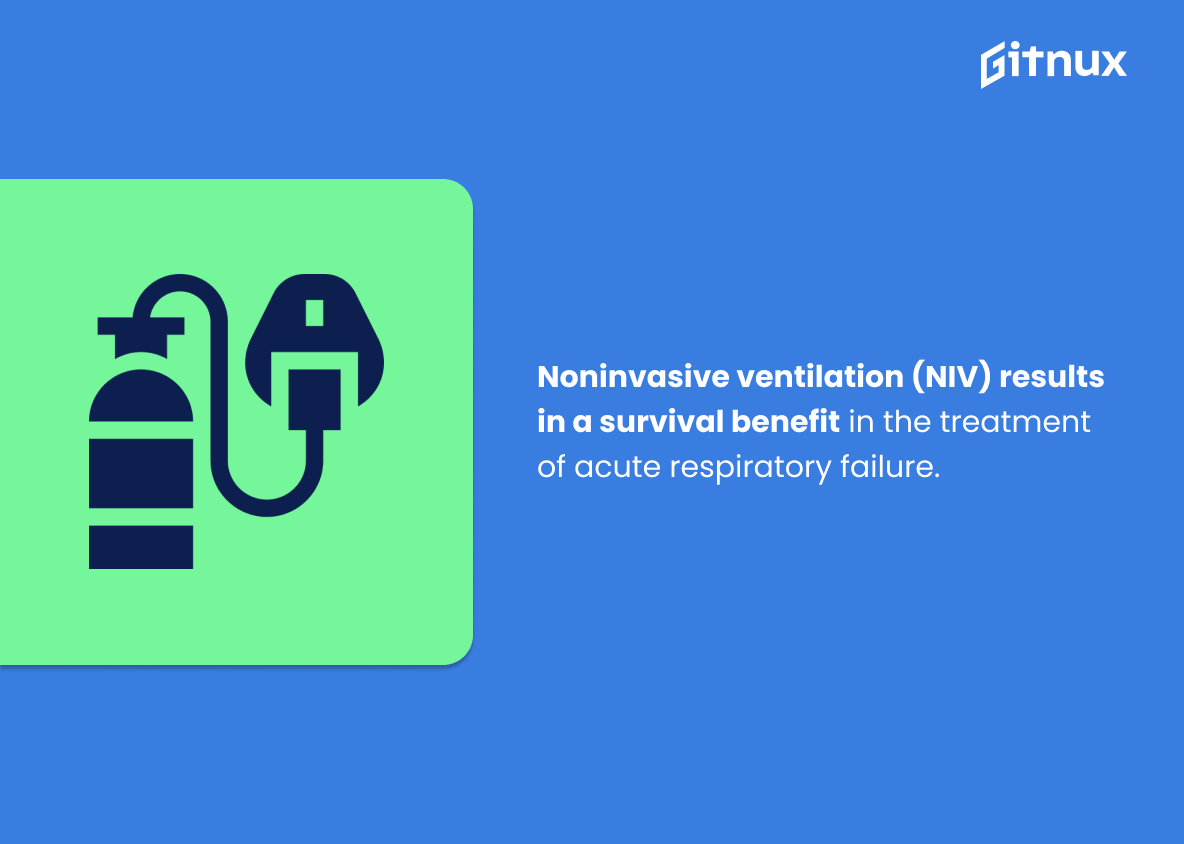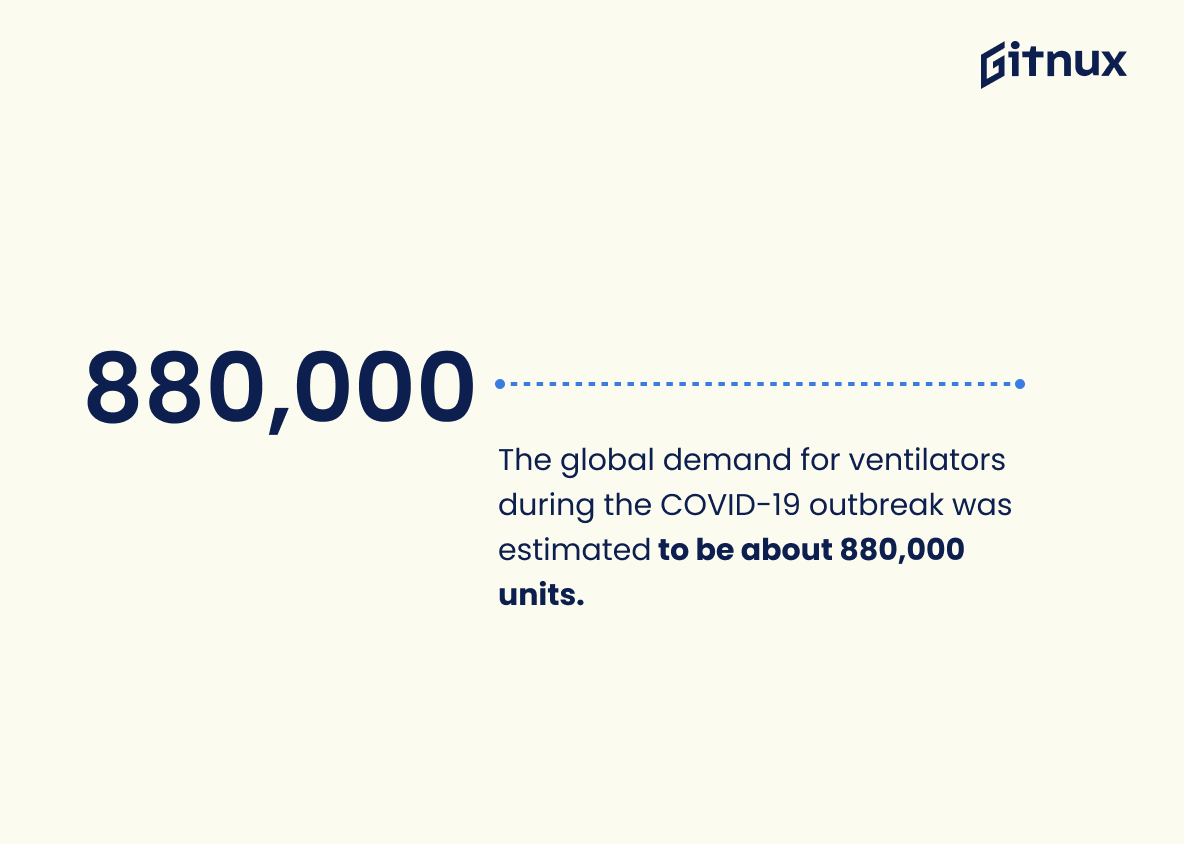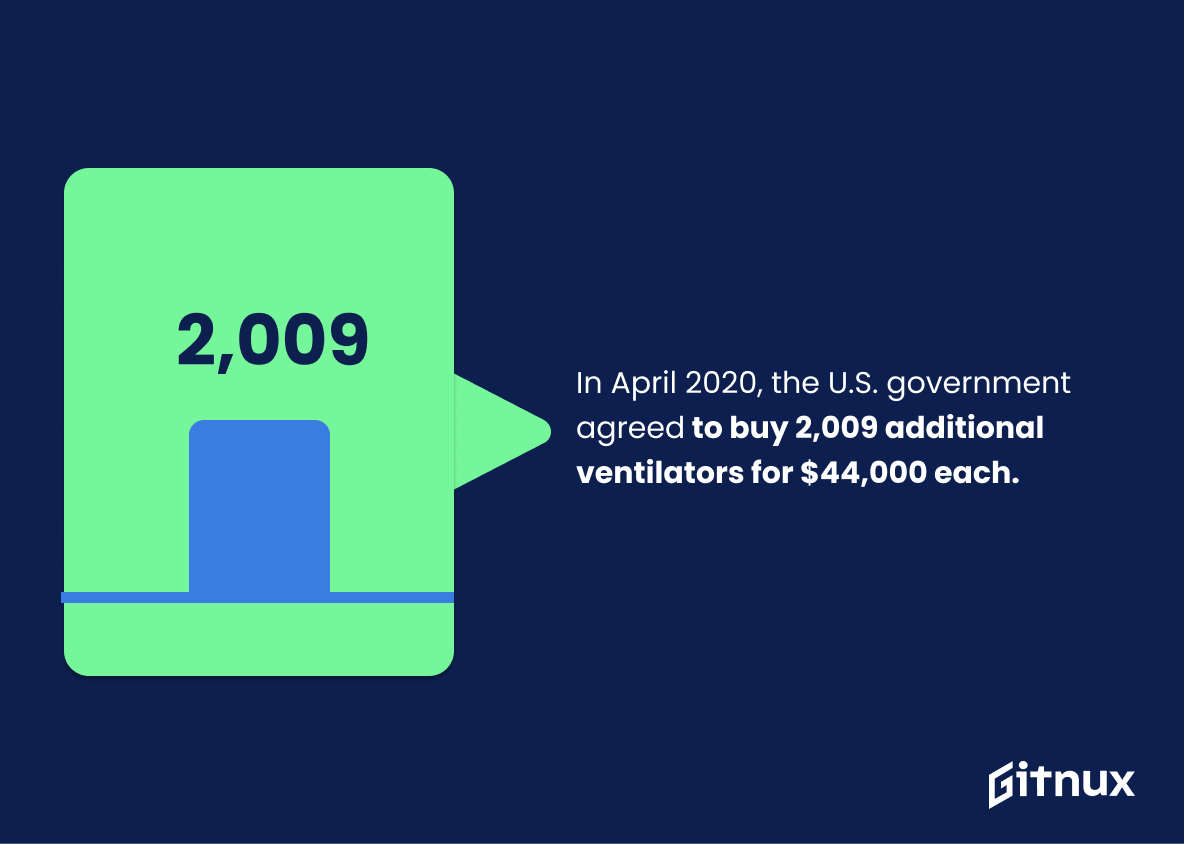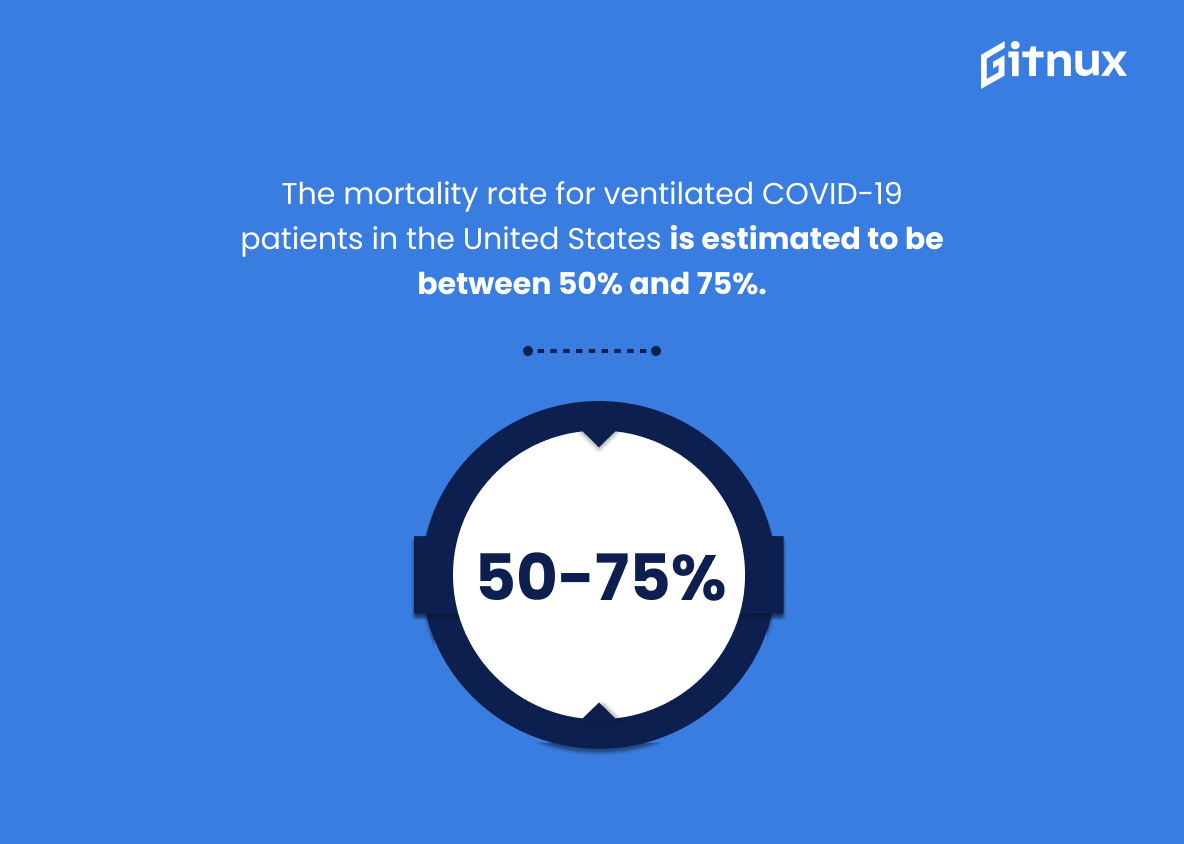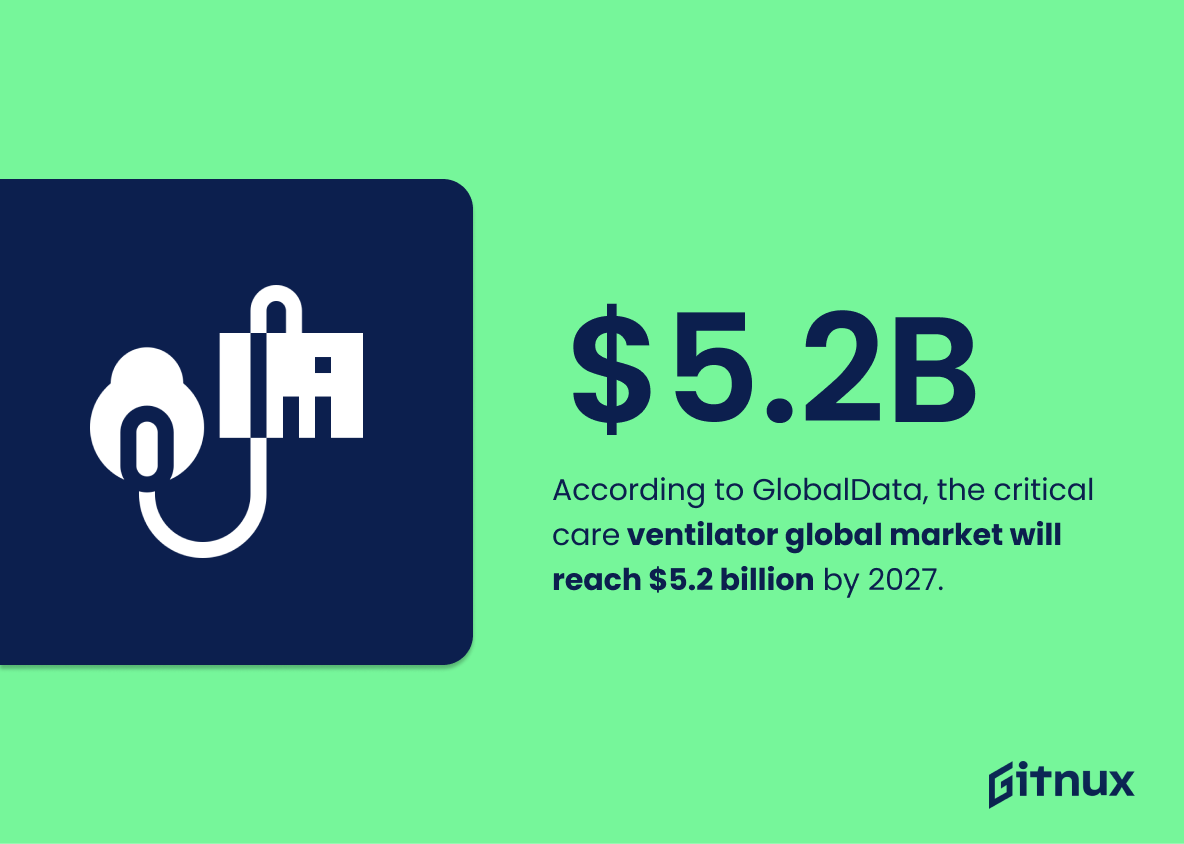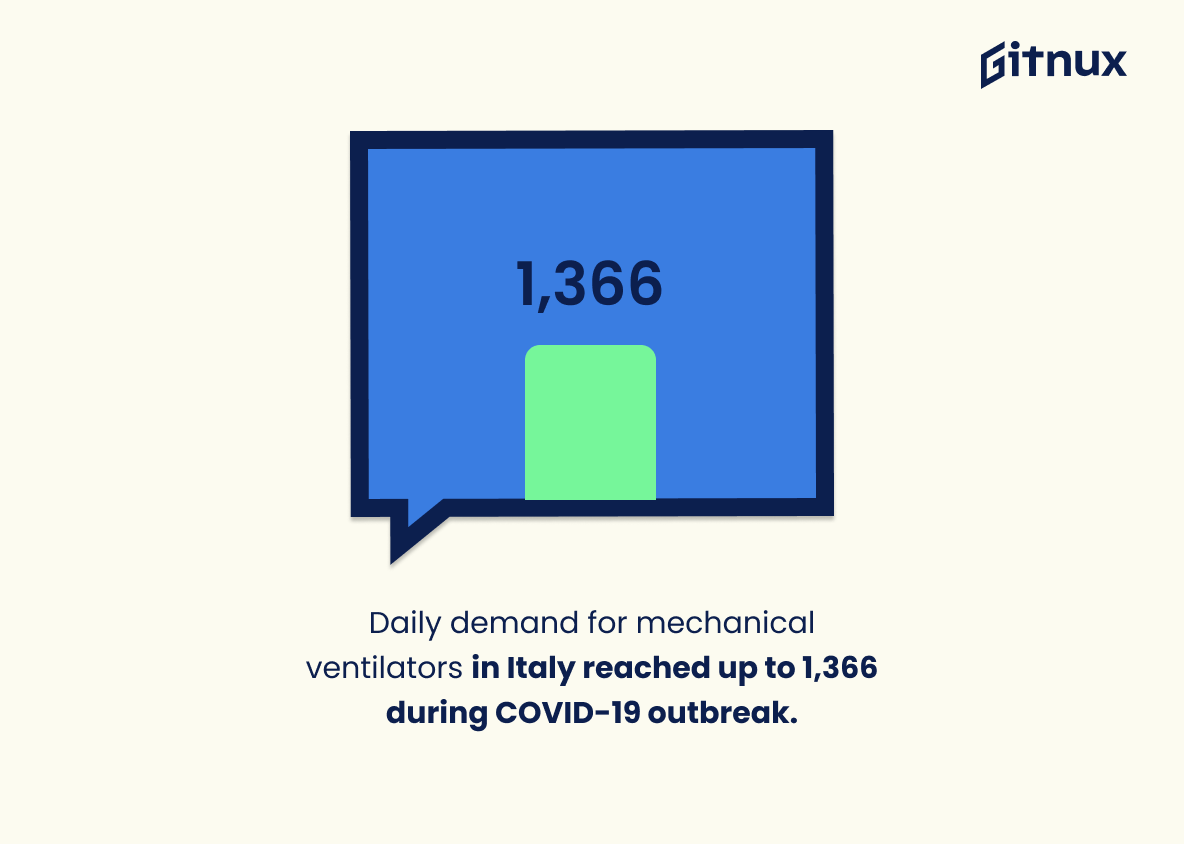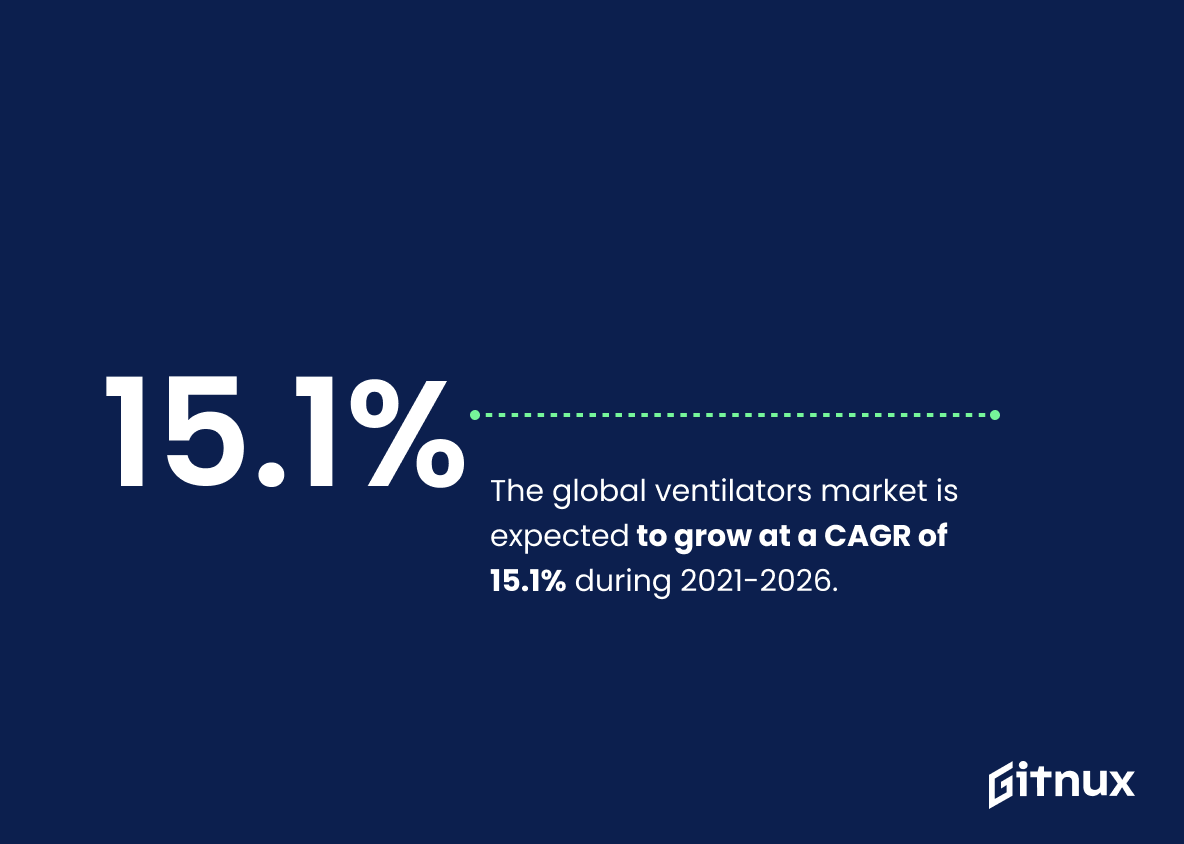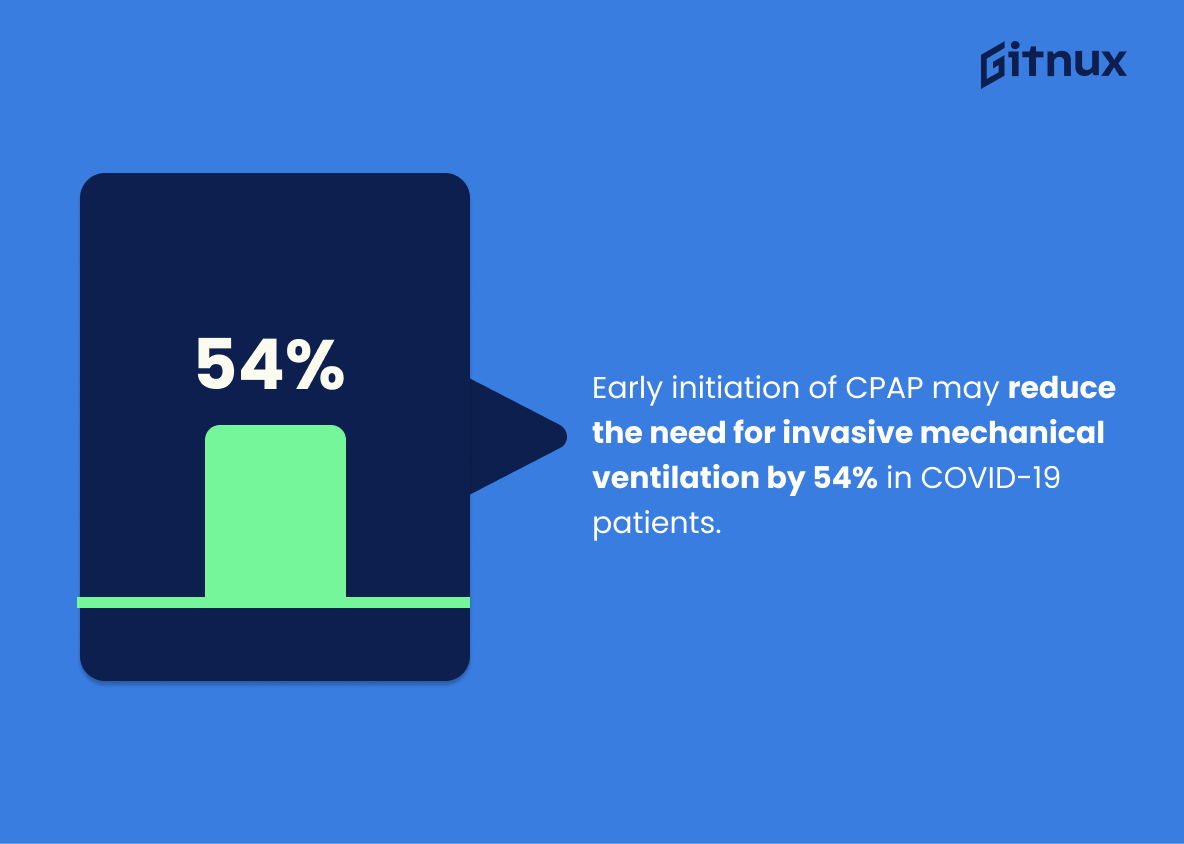Ventilators support respiratory failure patients. The global market, valued at USD 1.44 billion in 2020, is projected to reach USD 3.77 billion by 2025. As of August 2020, the US had 69,000 ventilators, with 25%-35% of COVID-19 hospital patients needing them, as per a 2021 JAMA report.
A UK study showed a 54.8% ICU mortality rate for ventilated COVID-19 patients. The average daily ventilator cost in US hospitals is $1,522. About 13.3% of ventilated patients develop Ventilator Associated Pneumonia, reported by the American Thoracic Society Journals in 2019.
Ventilator usage rose by 356% from 1993-2012. GlobalData forecasts the market will hit USD 5.2 billion by 2027. Early Continuous Positive Airway Pressure initiation may reduce invasive ventilation need by 54% in COVID-19 patients. Let’s delve deeper into the key statistics surrounding ventilators and their effect on patient care.
This statistic is a testament to the importance of mechanical ventilators in 2020. It highlights the sheer scale of the global market for these life-saving devices, and the immense demand for them. It also serves as a reminder of the vital role they play in providing medical care to those in need.
As of August 2020, the United States had a stockpile of 69,000 ventilators.
This statistic is a stark reminder of the importance of ventilators in the United States. With 69,000 ventilators in the stockpile, it is clear that the demand for these life-saving devices is high and that the need for more is urgent. This statistic serves as a call to action for those who can help to ensure that those in need of ventilators have access to them.
Ventilator Statistics Overview
In a study from the United Kingdom, the ICU mortality rate for mechanically ventilated COVID-19 patients was 54.8%.
This statistic is a stark reminder of the severity of COVID-19 and the importance of ventilators in treating the virus. It highlights the need for more ventilators to be available to treat those who are critically ill, as well as the need for more research into treatments and therapies that can help reduce the mortality rate.
On average, the daily cost of mechanical ventilator use in the U.S. is $1,522.
This statistic is a stark reminder of the financial burden that ventilator use can place on individuals and families in the U.S. It highlights the need for more affordable and accessible options for those who require the use of a ventilator.
About 50% of patients in the ICU will require mechanical ventilation at some point.
This statistic is a stark reminder of the prevalence of mechanical ventilation in the ICU, highlighting the importance of understanding the latest ventilator statistics. It serves as a reminder that ventilators are a critical tool in the fight against serious illnesses, and that understanding the latest trends in their use is essential.
In the period of 1993-2012, mechanical ventilator use in the U.S. increased by 35.6%.
This statistic is a testament to the growing need for mechanical ventilators in the U.S. over the past two decades. It highlights the importance of ventilators in providing life-saving care to those in need, and the need for continued investment in this technology.
In 2025, the global mechanical ventilator market is projected to reach USD 3.77 billion.
This statistic is a telling indication of the growing demand for mechanical ventilators in the coming years. It highlights the importance of ventilators in the medical industry and the need for more research and development in this field. It also serves as a reminder of the need for increased investment in the production of ventilators to meet the growing demand.
Noninvasive ventilation (NIV) results in a survival benefit in the treatment of acute respiratory failure.
This statistic is a powerful reminder of the life-saving potential of noninvasive ventilation (NIV) in the treatment of acute respiratory failure. It highlights the importance of having access to this technology and the need to ensure that those who require it are able to receive it in a timely manner. It also serves as a reminder of the importance of investing in research and development to further improve the efficacy of NIV in treating acute respiratory failure.
The median number of ventilator-free days at 28 days was 21.3 in the low tidal volume group in the ARDSNet trial.
This statistic is a testament to the efficacy of low tidal volume ventilation in the ARDSNet trial. It shows that patients in the low tidal volume group were able to spend more days without the need for a ventilator, indicating that this type of ventilation is more effective in helping patients recover from ARDS.
The global demand for ventilators during the COVID-19 outbreak was estimated to be about 880,000 units.
This statistic is a stark reminder of the immense need for ventilators during the COVID-19 outbreak. It highlights the urgency of the situation and the importance of having enough ventilators to meet the global demand. This statistic serves as a call to action for governments, healthcare providers, and other stakeholders to take the necessary steps to ensure that the necessary resources are available to meet the needs of those affected by the virus.
In April 2020, the U.S. government agreed to buy 2,009 additional ventilators for $44,000 each.
This statistic is a testament to the importance of ventilators in the fight against the COVID-19 pandemic. The U.S. government’s decision to purchase 2,009 additional ventilators for $44,000 each shows the commitment to ensuring that those in need of this life-saving equipment have access to it. This statistic is a reminder of the importance of ventilators and the need to continue to invest in them.
The mortality rate for ventilated COVID-19 patients in the United States is estimated to be between 50% and 75%.
This statistic is a stark reminder of the severity of COVID-19 and the importance of ventilators in saving lives. It highlights the need for more ventilators to be available in the United States to help those who are critically ill with the virus. It also serves as a warning to those who may not be taking the virus seriously enough, as the mortality rate for ventilated COVID-19 patients is alarmingly high.
According to GlobalData, the critical care ventilator global market will reach $5.2 billion by 2027.
This statistic is a powerful indicator of the growing demand for critical care ventilators in the coming years. It highlights the importance of ventilators in the medical industry and the need for increased production and availability of these life-saving devices. With the global market for critical care ventilators projected to reach $5.2 billion by 2027, it is clear that ventilators are becoming increasingly essential in the healthcare sector.
As of May 2020, daily demand for mechanical ventilators in Italy reached up to 1,366 during the peak of the COVID-19 outbreak.
This statistic is a stark reminder of the severity of the COVID-19 outbreak in Italy, and how it has impacted the demand for mechanical ventilators. It highlights the need for increased production and availability of ventilators to meet the growing demand, and underscores the importance of understanding the current state of ventilator statistics.
The global ventilators market is expected to grow at a CAGR of 15.1% during 2021-2026.
This statistic is a powerful indicator of the potential of the ventilators market in the coming years. It shows that the demand for ventilators is expected to increase significantly, which could lead to more investment in the industry and the development of new technologies. This could have a positive impact on the healthcare industry, as well as on the economy as a whole. The statistic is therefore an important piece of information for anyone interested in the ventilators market.
Early initiation of continuous positive airway pressure (CPAP) may reduce the need for invasive mechanical ventilation by 54% in COVID-19 patients.
This statistic is a powerful reminder of the importance of early CPAP intervention in COVID-19 patients. By initiating CPAP early, it is possible to reduce the need for invasive mechanical ventilation by more than half, which can be a life-saving measure for those suffering from the virus. This statistic is a testament to the effectiveness of CPAP in treating COVID-19 and highlights the need for early intervention to ensure the best possible outcomes for patients.
Conclusion
The statistics presented in this blog post demonstrate the importance of mechanical ventilators and their use during the COVID-19 pandemic. The global market for mechanical ventilators was valued at USD 1.44 billion in 2020, with projections to reach USD 3.77 billion by 2025 and up to USD 5.2 billion by 2027 according to GlobalData estimates. In addition, it is estimated that approximately 50% of patients admitted into ICUs will require a mechanical ventilation device at some point during their stay, while 13.3% may develop VAP as a result of its usage; both figures highlighting the need for proper management when using these devices on critically ill patients such as those affected by COVID-19 who have an increased risk of mortality due to respiratory failure or overdistension caused by improper settings or prolonged use without monitoring patient response adequately . Furthermore, early initiation of noninvasive ventilation (NIV) has been shown to reduce the need for invasive mechanical ventilation significantly which could help alleviate pressure from healthcare systems overwhelmed with critical cases requiring intensive care support worldwide
References
0. – https://www.globenewswire.com
1. – https://www.ncbi.nlm.nih.gov
2. – https://www.pubmed.ncbi.nlm.nih.gov
3. – https://www.fortunebusinessinsights.com
4. – https://www.apnews.com
5. – https://www.healtheuropa.eu
6. – https://www.healthcare-in-europe.com
7. – https://www.erj.ersjournals.com
8. – https://www.khn.org
9. – https://www.medrxiv.org
10. – https://www.mordorintelligence.com
11. – https://www.statista.com
12. – https://www.thelancet.com
